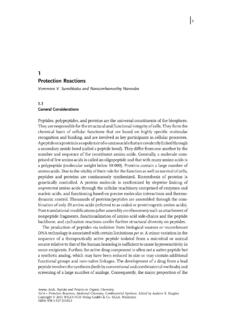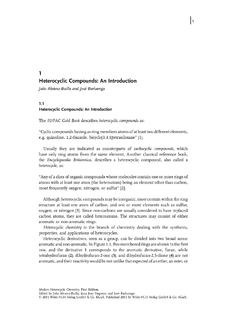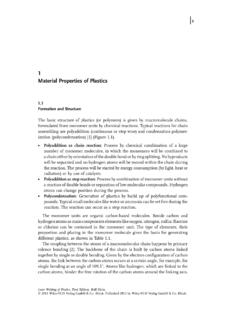Transcription of Mechanised Shield Tunnelling - Wiley-VCH
1 978-3-433-02995-4 Bernhard MaidlMartin HerrenknechtUlrich MaidlGerhard WehrmeyerMechanised Shield Tunnelling2nd EditionMechanised Shield Tunnelling , 2nd Edition B. Maidl, M. Herrenknecht, U. Maidl, G. WehrmeyerCopyright 2011 Ernst & Sohn, Berlin6 The tunnel GeneralThe tunnel lining has to permanently guarantee structural safety, durability and service-ability for the entire duration of the use of the tunnel . It supports the interior against the surrounding ground, forms a barrier against the penetration or emergence of water, transfers the internal loads from installations and trafic and, depending on the design of the TBM, may serve as an abutment for the thrust cylinders. The design and constructional detailing of the lining has to meet the requirements of the tunnel use, the acting loads and the conditions imposed by the construction support with shotcrete and rock bolts is only an option with a gripper TBM.
2 This type of support is dealt with in Maidl: Hardrock tunnel Boring Machines [203].The boring process normally demands a circular cross-section. The internal radius is determined by the use and the resulting requirements, such as a structure gauge that has to be maintained in transport tunnels or the required hydraulic cross-section in water or ventilation dimensioning of the lining is decided depending on the structural actions, which mainly come from ground and water pressure. On account of the circular cross-section of the tunnel and the loading, which is not normally radially symmetrical, the system and support lines rarely coincide. This results in a transverse bending action on the tunnel lining in addition to compression, which can lead to the installation of structural reinforcement.
3 The water pressure acting on the lining is inluenced both by natural conditions and by the waterprooing concept. In tunnel systems subjected to water under pressure, the natural water conditions are restored after the completion of Tunnelling . In this case, the lining must be designed to resist the entire water pressure. In tunnel systems not subjected to water under pressure, the water is drained so that no water pressure can build machinery used has a great inluence on the possible types of lining . If a open gripper TBM is used, temporary support can be provided with shotcrete and an inner lining of in-situ concrete can be concreted later. If a Shield is used normally, an immediately load-bearing segment lining will have to be 6 The tunnel Construction principles for the tunnel lining Single-layer and Double-layer constructionThe lining of tunnels can consist of one layer (single-pass) or two or more layered construction [185], [189], [196].
4 In double-layer construction, the individual layers are constitutionally and functionally separate. The outer lining is installed as the tunnel advances and is designed to provide immediate support for the excavated cavity against the expected ground pressure. There are normally no serviceability requirements and thus no waterprooing requirements. These are complied with for the lifetime of the tunnel by the second inner layer installed as a permanent lining . For tunnels subject to water under pressure, the inner lining is designed to resist the applied water pressure. The inner lining also has to permanently support the ground pressure if the structural stability of the outer lining cannot be guaranteed for the lifetime of the tunnel . This is the case, for example, when aggressive groundwater, which can damage concrete, causes rotting of the outer lining .
5 The inner and outer layers of construction are normally constructionally separated, for example by foil, in order to keep the inner lining free from indirect actions. In waterproofed tunnels, the waterprooing membrane undertakes this constructions can either be real single-layer solutions fulilled by one construction system or composite solutions, in which two or more layers undertake the requirements on the lining with the individual layers contributing to the resistance of external loading as a composite (Figure 6-1). The irst category includes, for example, tunnels with a single-layer segmental or extruded concrete lining and also tunnels in stable rock, which require no support for structural purposes but are provided with a smooth internal inish such as in-situ concrete for aesthetic or operational purposes.
6 The second category includes, for example, tunnels whose lining consists of a composite of shotcrete applied for temporary support and a subsequently concreted bonded inner lining to complete the tunnel support both variants, the single-layer or composite cross-section must ensure structural safety and serviceability, particularly concerning waterprooing of the tunnel tube, for the entire period of 6-1 Definition of single-layer tunnel construction [185] Construction principles for the tunnel lining 119 As the installation of precast segments and the application of shotcrete are both possible for a TBM-driven tunnel , the whole range of single and multi-layer tunnel construction types is available. There are also new developments using steel ibre reinforced concrete.
7 Table 6-1 gives a schematic overview of the already used application 6-1 Matrix of possible lining construction typesInner layer or single-layer constructionShotcreteIn-situ concreteSegmentsExtruded concreteOuter layerShotcrete Segments Extruded concrete Single-layer construction The question as to whether single or double-layer construction is better is primarily determined by economic aspects. But the risks for the construction of a waterproof tunnel also have to be considered. The construction of a segmental lining as the inal tunnel support and lining is already standard worldwide for pressurised Shield Tunnelling . But for a hard rock TBM tunnel , the matter is not so clear-cut. A single-layer lining is only the economic option under certain of tenders for a number of major transport projects in Switzerland have shown that double-layer construction is still 5 % to 10 % cheaper because the production costs are lower due to thinner segments, less reinforcement and less stringent precision requirements.
8 Better advance rates can be achieved due to the shorter ring building time and the annular gap can be illed by stowing pea gravel instead of relatively expensive grouting, which is required to compress the gaskets in the longitudinal joints of the segments, among other Watertight and water draining constructionIn order to deal with the presence of water in the ground, there are two basic possibilities: the groundwater can be collected by drainage and led away, or the tunnel can be made watertight all round and resist water under pressure. Figure 6-2 shows the functional principles of these two methods through the example of a single-layer segment lining (left) and a double-layer cross-section with in-situ inner lining (right).
9 In drained tunnels, the tunnel vault is made watertight to protect the interior from water penetration. This can be achieved by a plastic waterprooing membrane hung in front of the inner lining or the construction of the vault as a waterproof concrete structure. The groundwater lows around the technically waterproof tunnel lining into the drains at the sides, where it is collected and carried away. This system is also known as drainage pipes with umbrella waterprooing and is suitable for percolating water or water under pressure. As no hydrostatic pressure can build up around a drained tunnel , the tunnel lining only has to be designed to resist ground 6 The tunnel lininga) b)Figure 6-2 Construction principle of watertight and drained tunnel linings a) Botlek tunnel , internal diameter m, single-layer, pressure-resistant b) Murgenthal tunnel , internal diameter m, double-layer, drainedA disadvantage of tunnel systems that drain water away is the sometimes heavy expense for the maintenance of the drainage system due to encrustation and sintering, resulting in high operating costs.
10 In order to maintain their function, drainage pipes should be lushed regularly. Recent investigations have shown that the use of low-elution shotcrete, constructional alterations to individual components of the drainage system and alterations to the overall system, like for example the exclusion of air by backing up the water, can reduce the problem of sintering [198]. tunnel systems that drain water have an impact on groundwater conditions and thus the ecological system by lowering the groundwater table [184]. It may therefore be a requirement for environmental protection reasons to construct a waterproof tunnel without any effect on groundwater conditions after the completion of the the 1960s, the use of improved materials (plastic waterprooing membranes, plastic waterstops, waterproof concrete, new grouts etc.)









